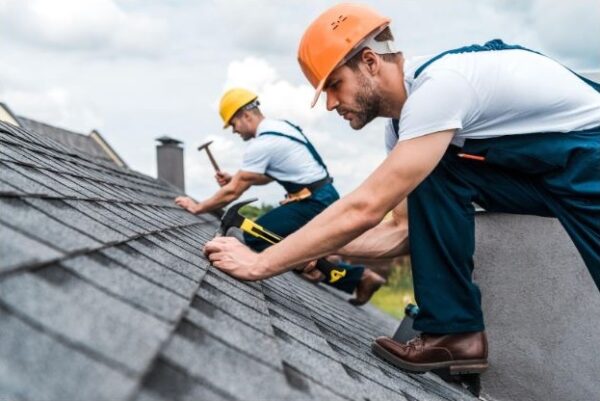
A roofer is a skilled professional specializing in the construction, repair, and maintenance of roofs. This article delves into the multifaceted role of a roofer, exploring the various aspects of roofing services, materials, techniques, and maintenance practices that ensure the longevity and safety of your home.
The Importance of Roofing Services
Roofing is a critical component of any building, providing protection against the elements and contributing to the overall structural integrity. A roofer’s expertise ensures that roofs are installed correctly, maintained regularly, and repaired promptly when issues arise. The significance of professional roofing services cannot be overstated, as they directly impact the safety, energy efficiency, and aesthetic appeal of a property.
Types of Roofing Services Offered by Roofers
1. Roof Installation
Installing a new roof involves selecting appropriate materials, preparing the roof deck, and ensuring proper installation to prevent future issues. Roofers assess the building’s design and climate considerations to recommend suitable roofing systems, such as asphalt shingles, metal roofing, or tile roofs.
2. Roof Repair
Over time, roofs may develop issues like leaks, damaged shingles, or structural weaknesses. Roofers diagnose these problems and perform necessary repairs to restore the roof’s functionality. Timely repairs can prevent minor issues from escalating into major problems, saving homeowners significant costs.
3. Roof Replacement
When a roof reaches the end of its lifespan or sustains extensive damage, replacement becomes necessary. Roofers manage the entire process, from removing the old roofing materials to installing a new system that meets current standards and homeowner preferences.
4. Roof Maintenance
Regular maintenance is essential to prolong the life of a roof. Roofers conduct inspections to identify potential issues, clean gutters, remove debris, and ensure that all components are functioning correctly. Preventative maintenance helps in avoiding costly repairs and extends the roof’s lifespan.
Common Roofing Materials and Their Benefits
Roofers work with various materials, each offering distinct advantages:
- Asphalt Shingles: Popular due to their affordability and ease of installation. They provide reliable protection and come in a variety of colors and styles.
- Metal Roofing: Known for its durability and energy efficiency. Metal roofs can withstand harsh weather conditions and have a long lifespan.
- Clay and Concrete Tiles: Offer a traditional aesthetic and excellent thermal insulation. These materials are fire-resistant and can last for decades.
- Wood Shingles and Shakes: Provide a natural look and are environmentally friendly. However, they require regular maintenance to prevent decay and moss growth.
- Slate: Highly durable and resistant to fire and insects. Slate roofs have an extended lifespan but come with a higher initial cost.
The Roofing Installation Process
The process of installing a roof involves several critical steps:
- Preparation: Removing old roofing materials and inspecting the roof deck for damage.
- Underlayment Installation: Applying a waterproof layer to protect against moisture infiltration.
- Material Installation: Laying down the chosen roofing materials, ensuring proper alignment and secure fastening.
- Flashing and Ventilation: Installing flashing around chimneys and vents to prevent leaks, and ensuring adequate ventilation to prolong the roof’s life.
- Final Inspection: Conducting a thorough inspection to ensure everything is installed correctly and functioning as intended.
Roof Maintenance Tips
Regular maintenance can significantly extend the life of a roof. Roofers recommend the following practices:
- Regular Inspections: Conducting bi-annual inspections, especially after severe weather events, to identify and address potential issues promptly.
- Cleaning Gutters: Ensuring gutters are free from debris to allow proper water flow and prevent water damage to the roof.
- Trimming Overhanging Branches: Preventing tree limbs from scraping the roof surface or causing damage during storms.
- Addressing Moss and Algae Growth: Removing moss and algae to prevent decay and maintain the roof’s integrity.
- Ensuring Proper Ventilation: Maintaining attic ventilation to regulate temperature and moisture levels, preventing damage to roofing materials.
The Role of a Roofer in Enhancing Home Value
A well-maintained roof not only protects the home but also enhances its market value. Potential buyers often view a new or well-maintained roof as a significant asset, reducing future maintenance concerns. Roofers contribute to this aspect by providing quality installations and repairs that improve the property’s appeal and functionality.
Challenges Faced by Roofers
Roofing professionals encounter various challenges, including:
- Weather Conditions: Adverse weather can delay projects and affect the quality of work.
- Safety Risks: Working at heights poses significant risks, necessitating strict adherence to safety protocols.
- Material Costs: Fluctuating prices of roofing materials can impact project budgets.
- Regulatory Compliance: Keeping up with building codes and regulations requires continuous education and adaptation.
Conclusion
The role of a roofer in columbia sc is indispensable in ensuring the safety, efficiency, and aesthetic appeal of a home. Through expert installation, timely repairs, and regular maintenance, roofers safeguard one of the most critical components of a building. Homeowners should prioritize professional roofing services to protect their investment and enhance the longevity of their roofs.
By understanding the comprehensive services provided by roofers and the importance of regular maintenance, homeowners can make informed decisions that contribute to the long-term health and value of their properties.